In Japanese, itadakimasu means “to humbly receive.” When uttered before a meal in its purest sense, it takes into account all of the elements, both large and small, that contributed to a meal—the earth that yielded the herb garnish, the fish that provided the delicate meat and the chef whose efforts created the dish. The phrase primes a diner to discern the steady accumulation of subtleties in a flavor profile. And, in this state, Kojo, a new Asian fusion restaurant on Palm Avenue, delivers.
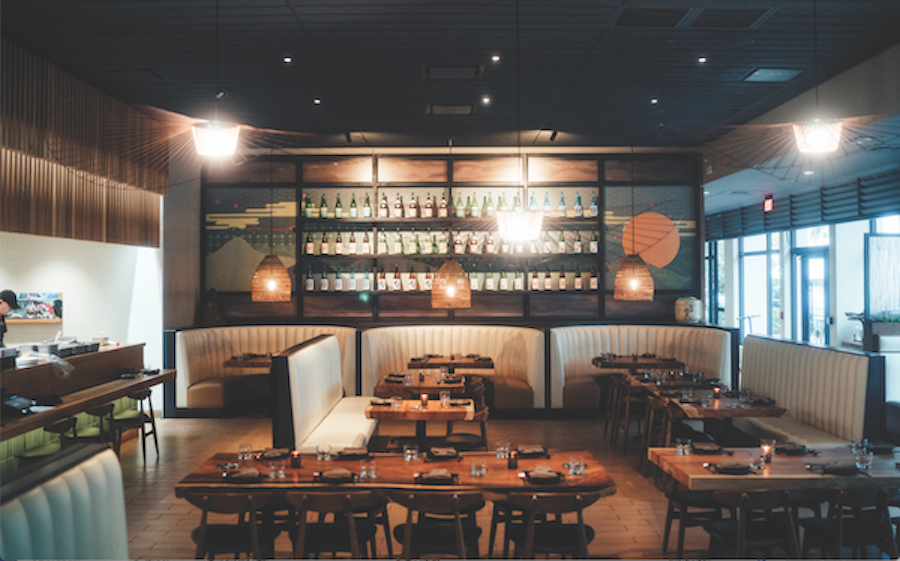
The izakaya-inspired concept pulls from the combined expertise of the Speaks Clam Bar team, including owners Mark and Natalia Levey; general manager Robert Castellon and beverage director David Roth (with their the big-city pedigree); and executive chef Ken Lumpkin, whose deep personal (his mother is Japanese) and professional experience with Japanese cuisine adds a calculating panache to Kojo’s menu. Together, they concocted a space full of carefully chosen design elements and, more importantly, a food and drink menu that balances fun experimentation with the pursuit of understated perfection.
A selection of small plates and bao buns offer shareable dishes that can be built up into a group tasting menu of sorts, or treated like appetizers. A yellowtail sashimi with jalapeño slices comes served in a shallow bowl, with house ponzu at its base and cilantro microgreens as a garnish. The fish tastes clean and lean—a perfect centerpiece to the sweet, savory and spicy tones coming from the ponzu, yellowtail and jalapeño, respectively. Though outlandish-sounding on paper, the tuna pizza shows off the restaurant’s ability to balance creativity with accessible flavor. A thin and crispy tortilla gets cooked to order and is then layered with tuna sashimi, ponzu mayo, truffle oil, red onion slivers and microgreens. It somehow manages to blend flavors from Mexico and Japan with harmony such that it never clashes or seems unnatural.
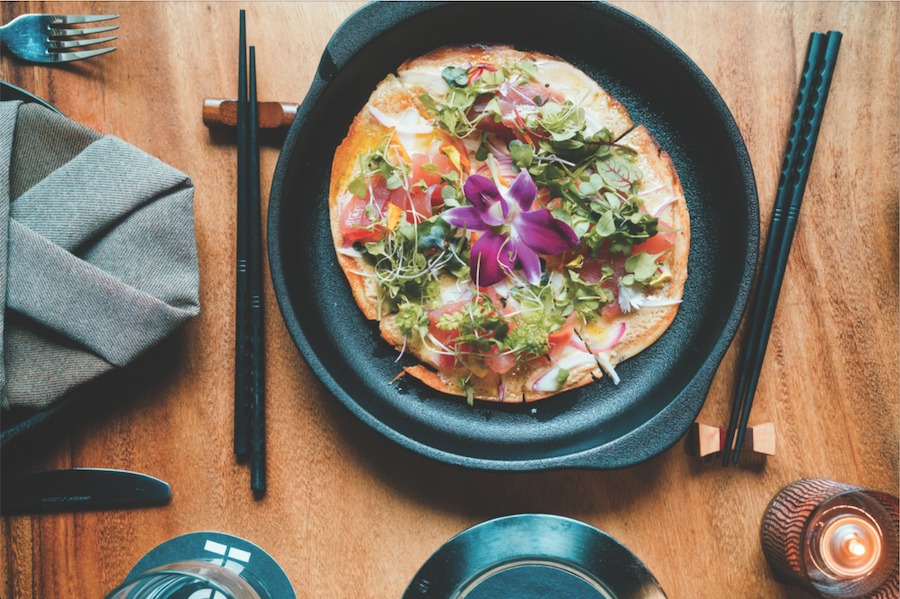
With the tuna pizza’s hint of Mexican flavors, the mezcalero cocktail might offer a nice complement. Made with triple sec, Del Maguey mezcal, ginger bitters, and freshly squeezed grapefruit and lime juices, the cocktail is described by Roth as “a really juicy margarita.” What the fast-talking mixologist misses with the description is the rich smokiness and dryness of the drink that elevates it from a mindless party punch to a more refined experience, though it’s still plenty boozy. Also worth noting is that Roth invented the drink and is credited as such in Difford’s Guide.
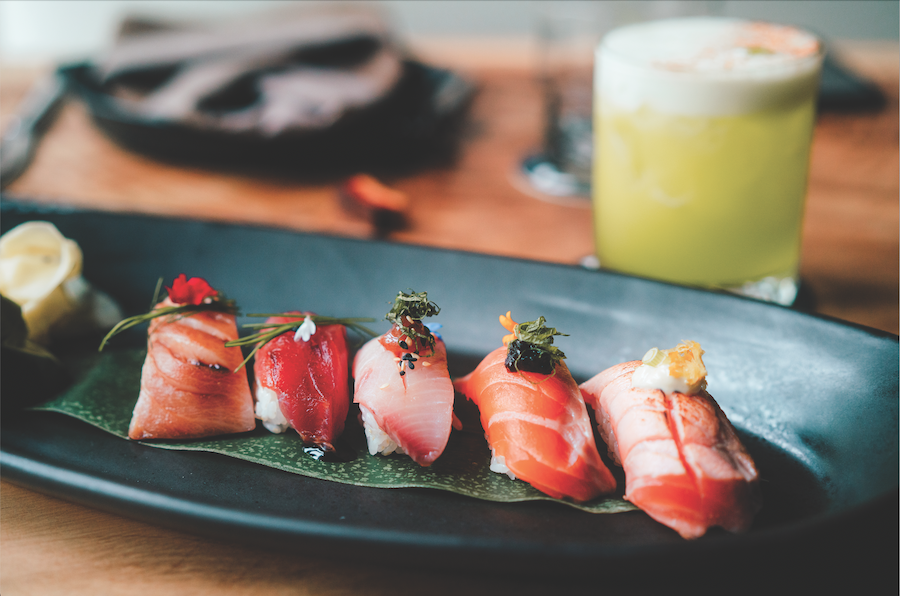
To plumb the depths of Lumpkin’s expertise as a sushi chef, an omakase (chef’s choice) plate of assorted nigiri delights with both its presentation and precision. Serving the nigiri on a large earthenware plate bisected by a lush green frond, Lumpkin forms the sticky rice into uniform mounds before draping thin, decadent slices of chilled fish over each. He then adds a hint of different flavor profiles for each fish for balance—like a smoked soy and yuzu kosho for the bluefin toro, or a yuzu kosho aioli with Meyer lemon zest for the torched salmon.
Moving on to larger dishes, the shrimp, bacon and kimchi fried rice offers a more indulgent fusion of cuisines compared to the tuna pizza. Made with Nueske’s bacon, Gulf-caught shrimp and housemade kimchi—then topped with scallion ginger oil, kabayaki, nori flakes, a sunny-side-up egg and a drizzle of spicy gochujang sauce—it holds nothing back. It’s busy, yes, but it’s also as rich as the many Asian cuisines it borrows from while being held together by the silky, smoky fat of the bacon. Every element still maintains its own place, with the copious amounts of umami accented by the tang, sweetness and heat of the kimchi, gochujang and scallion ginger oil.
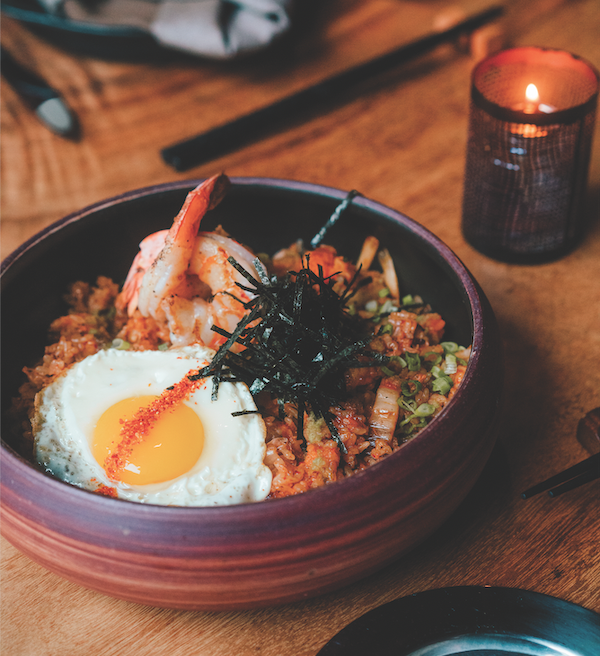
A cocktail accompaniment here depends on the diner’s goals. Should something savory and eccentric be desired, the “black and gold” is the path. Made with bourbon, Frangelico, honey and lemon, it then takes a drastic and altogether pleasant turn with the addition of sesame oil. A few drops of the oil are added to the shaker, and a few drops are added to the lemon wheel garnish to accent the hazelnut notes in the Frangelico and boost the nutty tones, making this a truly singular concoction. If more accessible fun is desired, Roth makes what he confidently describes as “the world’s best Midori sour.” The melon liqueur gives it the cartoonishly green hue traditionally associated with the drink, while navy-strength gin (57 percent alcohol by volume), lemon, bitters, a dash of lemongrass syrup and togarashi add layers of dryness, tang and saltiness.
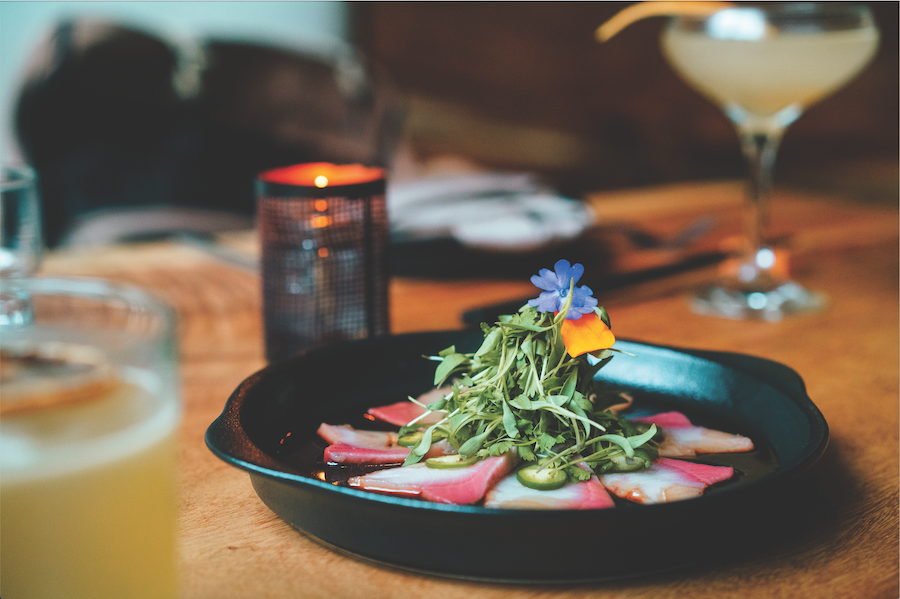
At the end of an evening in which such thoughtful food and drink has been consumed, it is appropriate to follow up the pre-meal supplication with a direct entreaty to the hands and minds of the people that made it possible. The Japanese have a word for this as well: gochisousama, which can be interpreted as “thanks for the feast.”
KOJO, 1289 N Palm Ave., Sarasota, 941-536-9717, eatkojo.com, @eatkojo









